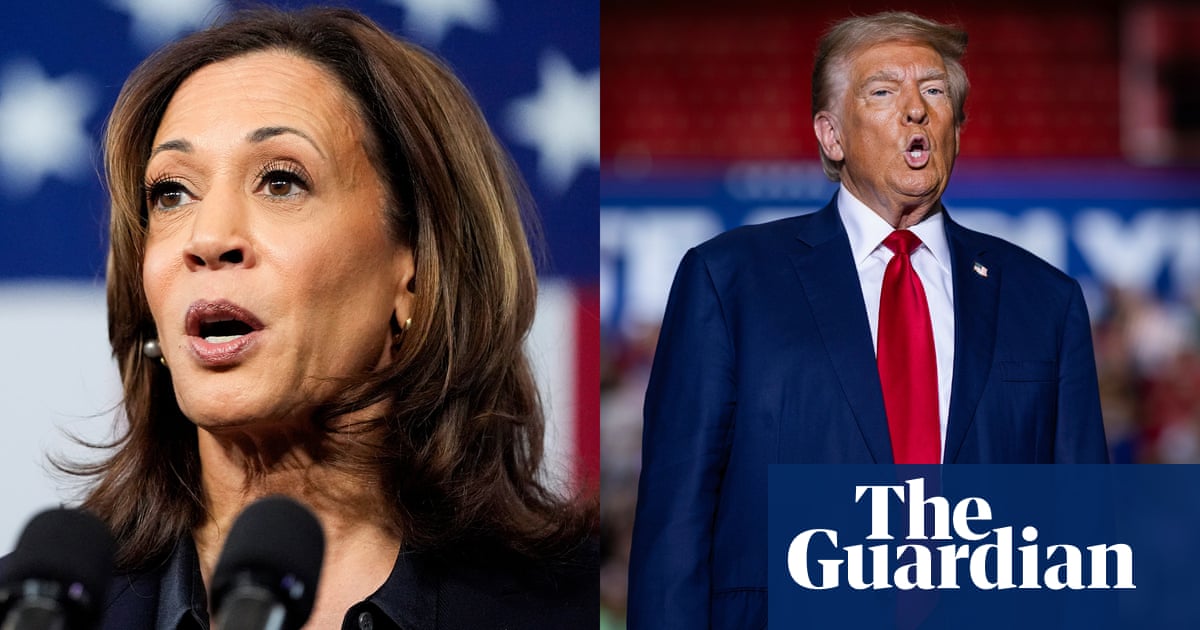As the 2024 presidential election unfolds, a close examination of recent polling data reveals a tight race between Vice President Kamala Harris and former President Donald Trump. The Guardian’s tracker indicates that Harris currently holds a national lead with 49.3% of the vote, compared to Trump’s 46%. This slight advantage reflects the evolving political landscape as early voting commences, with over 1.4 million Americans casting their ballots as of midday Friday, according to statistics from the Election Lab at the University of Florida.
Harris’s lead seems to mirror the trend observed in the previous week’s analyses. However, the upcoming vice-presidential debate may significantly impact these numbers, as the candidates engage more directly and voters consider their performances. The gravity of these events cannot be overstated; debates often serve as turning points in a campaign, swaying undecided voters.
The race for the presidency remains focused on the crucial battleground states of Pennsylvania, Michigan, and Wisconsin. Collectively, these states hold a significant share of the 270 electoral votes necessary to secure a win. Currently, Harris edges out Trump in the 10-day average of polls in these states — by 1.2 points in Pennsylvania, a razor-thin lead in Michigan (0.1 points), and 2.2 points in Wisconsin. While these numbers provide a snapshot of the current state of affairs, analysts caution that such margins are insufficient to predict a clear winner, emphasizing the volatility of voter preferences as election day approaches.
Beyond these three states, additional battlegrounds such as Nevada, North Carolina, Georgia, and Arizona also demonstrate a competitive atmosphere. Notably, Nate Cohn, a polling analyst for The New York Times, points out that neither candidate has established a significant lead in the key states that could determine the election outcome. In his analysis, he remarked on the week’s abnormal quietness following Harris’s entry into the race, hinting at a potential turning point that awaits after the vice-presidential debate.
In Pennsylvania, after initial indicators showed Harris leading by approximately 2 points post-debate on September 10, the latest polls suggest the race is nearly deadlocked. The Guardian’s tracker aggregates various high-quality polls to give a nuanced perspective of the electoral landscape, currently showing the race as effectively a toss-up with Harris holding a 55% chance of winning against Trump’s 45%.
Trump appears to have an advantage in Arizona, leading Harris by a narrow margin of 48.8% to 48%. This lead is significant, especially considering Trump’s unexpected support among Hispanic voters. Historical trends indicate that in the 2020 election, Biden had a 25-point advantage among Latino voters in Arizona. However, current polling indicates a significant shift: Harris is leading Hispanic voters by only 12 points, according to Cohn’s analysis. A separate NBC News/Telemundo/CNBC poll reflects this trend, showing Harris garnering 54% support compared to Trump’s 40% among Hispanic voters, a noteworthy decline from Biden’s 59% in the last election.
Cohn underscores the importance of understanding the Hispanic demographic, stating that it is not a monolith. Past analyses have shown that Biden performed significantly better among college-educated Hispanic voters, while the non-college-educated demographic presented a much tighter race. This distinction is crucial as both campaigns tailor their strategies to win over these groups.
Recent findings from the nonpartisan Cook Political Report also affirm that the race remains tight nationwide. However, Harris is witnessing a positive shift in voter sentiment, with 46% of respondents believing she will win compared to 39% for Trump. This marks an 11-point swing in Harris’s favor since August, indicating her successful efforts in presenting herself as a serious contender in the race. The prevailing narrative suggests that Trump’s attempts to undermine Harris’s qualifications have not resonated effectively with the electorate.
On economic issues, polling reveals vital insights. While Trump has continued to be perceived as the stronger candidate in economic management, voters are now evenly split on who would be better at controlling inflation. This represents a notable shift from August when Trump had a 48% to 42% lead on the issue. Analysts suggest that Harris’s messaging surrounding economic concerns may be beginning to reach voters, while Trump’s attempts to link Harris to economic woes do not seem to have gained traction.
Overall, the evolving dynamics of the Harris-Trump race reflect a broader narrative filled with uncertainty and shifting voter priorities. As the election date draws closer, the outcomes of debates and campaign strategies will undoubtedly continue to shape the landscape, making every moment critical in this high-stakes electoral battle.
